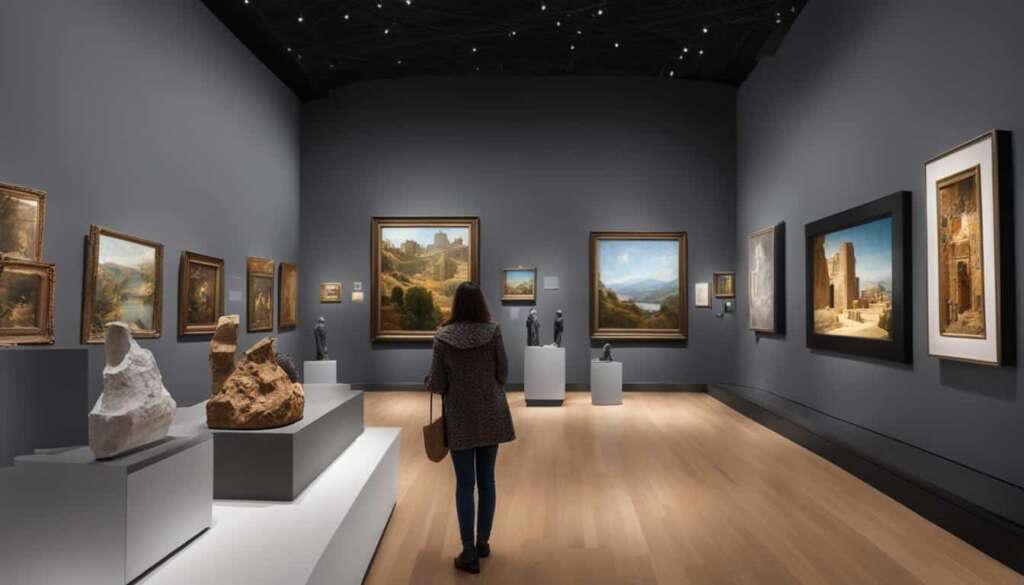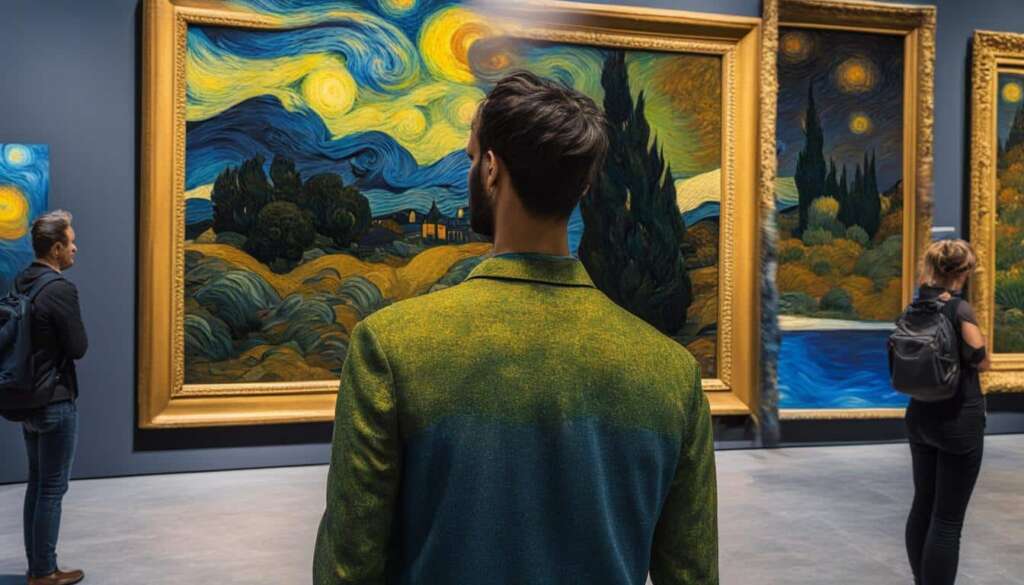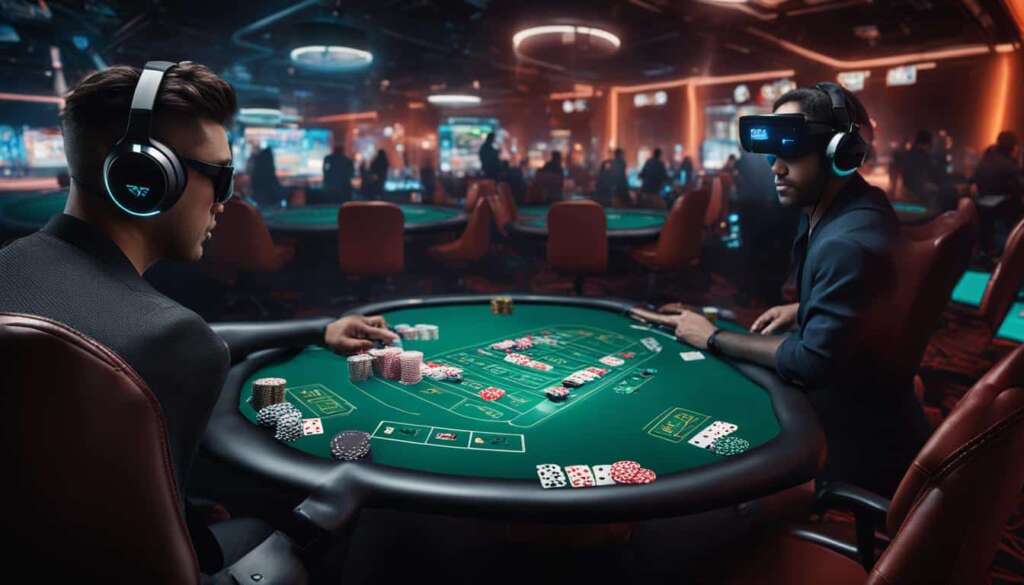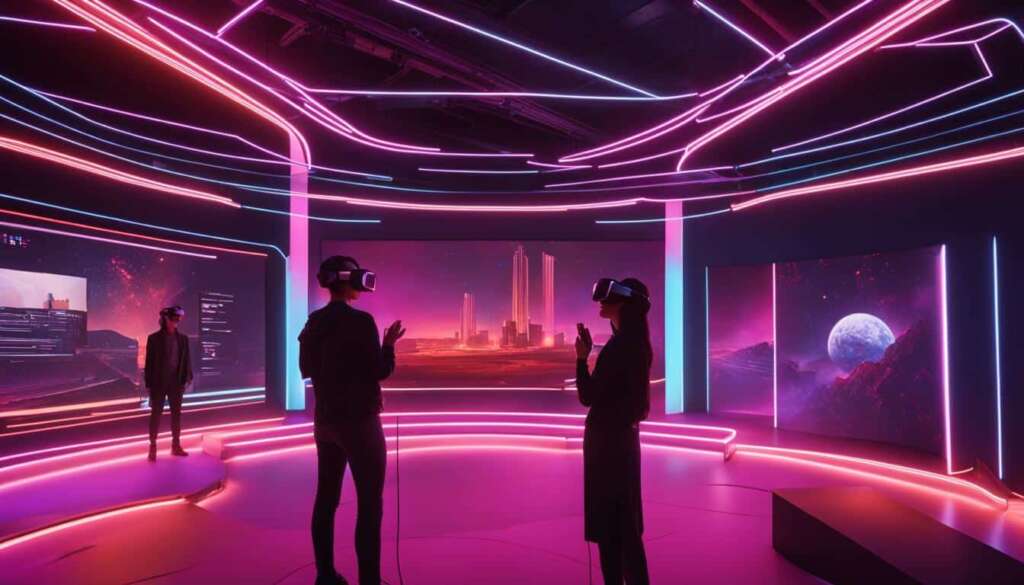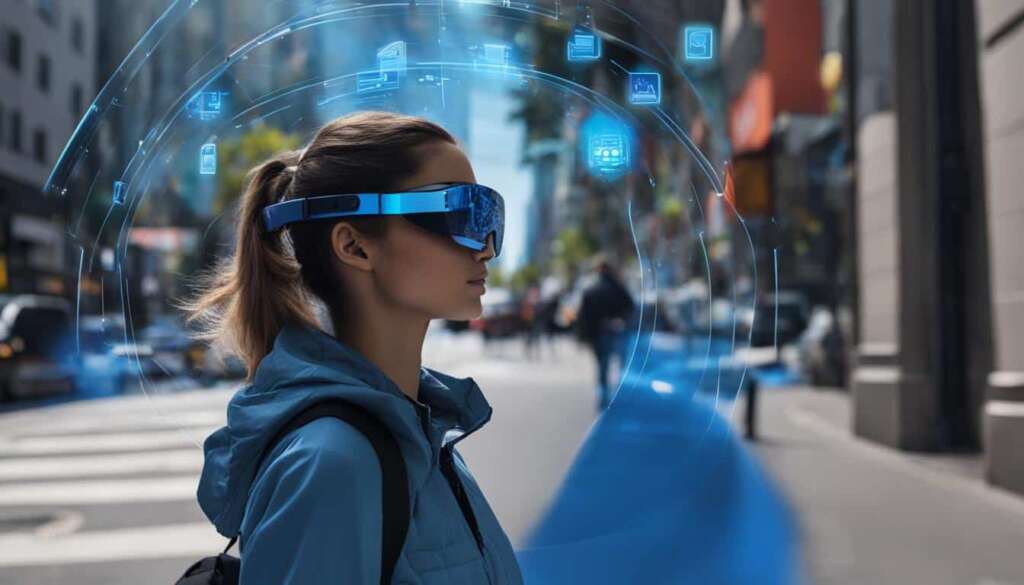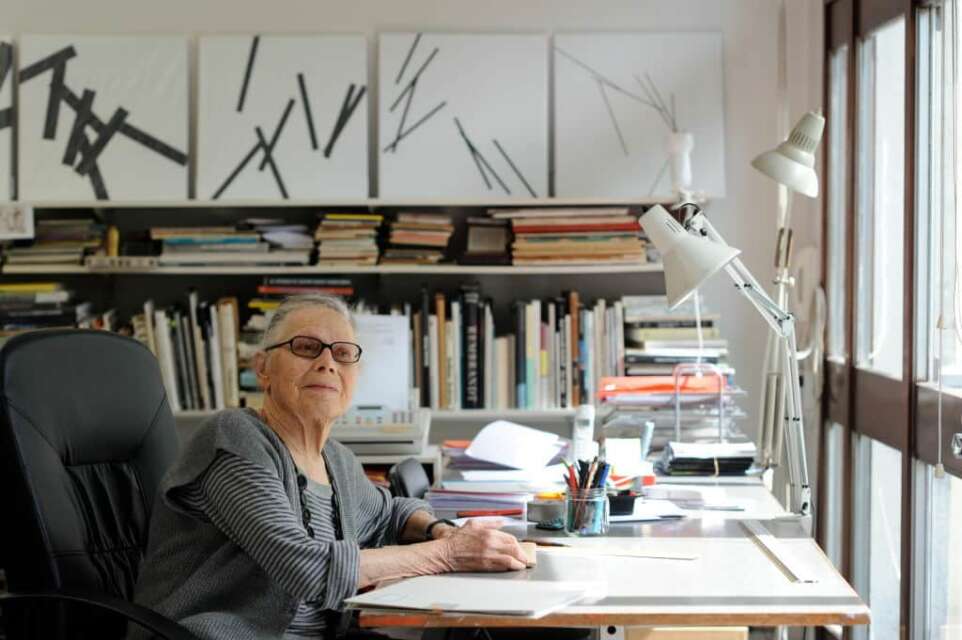Table of Contents
Snap, the creators of Snapchat, has developed augmented reality (AR) technology that is being used to enhance visitors’ experiences in museums and galleries around the world. This technology allows users to view 3D reconstructions of lost artwork and historic monuments through their smartphones. The Louvre in Paris has recently implemented this AR technology, showcasing 3D reconstructions of Egyptian antiquities. Snap’s AR studio in Paris is leading the charge in bringing this technology to art, culture, and education, expanding its potential beyond simple filters on social media.
AR has the potential to revolutionize the museum and gallery experience, offering new ways for visitors to engage with historical artifacts and artworks. By providing 3D reconstructions and interactive experiences, AR can bridge the gap between the past and the present, allowing viewers to immerse themselves in the cultural heritage of different civilizations. This technology has been successfully implemented in renowned institutions such as the Rijksmuseum in Amsterdam and the Design Museum in London, showcasing its versatility and impact on the preservation and presentation of history.
The introduction of AR technology could potentially offer a resolution to the long-standing debate surrounding the Elgin Marbles, a collection of classical Greek marble sculptures. By creating digital reconstructions and displaying them in a virtual environment, AR can provide a shared cultural experience while preserving the original artifacts in their current location. This application of AR could provide a compromise that respects the historical significance of the marbles and satisfies the desire for their return to Greece.
AR technology plays a crucial role in the preservation of lost history and heritage. By digitally reconstructing ancient artifacts and monuments, AR allows viewers to experience them in a way that would not otherwise be possible. Through innovative use of QR codes and smartphone cameras, AR brings history to life and helps fill in gaps in our knowledge of the past. This technology has the potential to educate and engage audiences of all ages, providing a deeper understanding and appreciation of our shared cultural heritage.
The future of AR in the art and museum world is promising. As technology continues to advance, we can expect even more immersive and interactive experiences. AR glasses, for example, could allow users to see digital overlays and information directly in their field of view, removing the need for smartphones or other devices. This would enhance the visitor experience and open up new possibilities for artistic expression and storytelling within museum and gallery spaces. The potential for AR in the art and museum world is vast, and we can expect to see more exciting developments in the coming years.
AR technology is not limited to historical preservation and museum experiences. It also has a significant impact on artists and their creative process. Artists can use AR tools to create immersive and interactive artworks, blurring the boundaries between the physical and digital worlds. This technology opens up new possibilities for storytelling and expression, allowing artists to engage with their audiences in unique and captivating ways. AR has the potential to revolutionize the art world, giving artists new tools and mediums to explore and pushing the boundaries of creativity.
Augmented reality (AR) technology is revolutionizing the way we experience museums and cultural heritage. By bringing lost history back to life and offering immersive and interactive experiences, AR fills gaps in our knowledge and preserves our shared cultural heritage. With the potential to bridge cultural divides and provide new opportunities for artistic expression, AR is proving to be an invaluable tool in the preservation and presentation of history. As technology continues to advance, we can expect even more exciting developments in the world of AR and its impact on our understanding of the past.
The Potential of AR in Museums and Galleries
Augmented reality (AR) technology has the potential to revolutionize the museum and gallery experience, offering new ways for visitors to engage with historical artifacts and artworks. By providing 3D reconstructions and interactive experiences, AR can bridge the gap between the past and the present, allowing viewers to immerse themselves in the cultural heritage of different civilizations.
Renowned institutions such as the Rijksmuseum in Amsterdam and the Design Museum in London have successfully implemented AR, showcasing its versatility and impact on the preservation and presentation of history. Through AR, visitors can explore virtual exhibitions, interact with digital replicas of rare artifacts, and gain a deeper understanding of the context and significance of each piece. This immersive technology enhances the educational and entertainment value of museum visits, attracting a wider and more tech-savvy audience.
Furthermore, AR provides museums and galleries with the opportunity to expand their collections beyond physical limitations. With AR, institutions can digitally restore and display artworks that may be fragmented or located in different parts of the world. This enables a comprehensive viewing experience and encourages cultural exchange by showcasing items from private collections or distant museums. Visitors can delve into the details of these digital reconstructions, allowing for closer examination and appreciation of historical objects.
| Benefits of AR in Museums and Galleries |
|---|
| Enhances visitor engagement and interaction |
| Creates immersive and educational experiences |
| Expands collections beyond physical limitations |
| Preserves and presents history in a dynamic way |
| Attracts a wider and more tech-savvy audience |
In conclusion, AR has the potential to transform the museum and gallery experience, offering a unique and engaging way to explore cultural heritage. Through 3D reconstructions, interactive experiences, and expanded collections, AR brings history to life and provides visitors with a deeper understanding and appreciation of our shared past. As this technology continues to advance, we can expect even more exciting developments in the integration of AR in museums and galleries around the world.
AR and the Elgin Marbles Debate
The Elgin Marbles, a collection of classical Greek marble sculptures, have long been a point of contention between Greece and the British Museum. The dispute revolves around the ownership and display of these cultural artifacts, with Greece arguing for their return to their country of origin. However, the introduction of augmented reality (AR) technology could potentially offer a compromise that satisfies both parties.
AR technology allows for the creation of digital reconstructions of the marbles, which can then be displayed in a virtual environment. This would enable viewers to experience the marbles in a highly immersive and interactive way, while still preserving the original artifacts in their current location. By leveraging AR, the Elgin Marbles debate could be approached from a new perspective, one that emphasizes shared cultural experiences and the preservation of historical significance.
AR has the potential to bring together people from different cultures and bridge the gap between physical and digital realms. It allows for the preservation and presentation of cultural heritage in innovative ways, satisfying the desire for access while maintaining the integrity of historical artifacts.
This application of AR technology not only has implications for the Elgin Marbles debate but also for cultural heritage preservation as a whole. It offers a glimpse into the future of museums and the ways in which technology can enhance our understanding and appreciation of history.
AR and Digital Restoration
One of the key advantages of AR in the context of cultural heritage is its ability to facilitate digital restoration. AR technology can be used to recreate missing or damaged parts of historical artifacts, bringing them back to their original state virtually. This allows viewers to see the artifacts in their intended form, providing a more comprehensive understanding of their historical and artistic significance.
Furthermore, AR can enable experts and curators to conduct detailed analyses of artifacts without the need for physical contact. This reduces the risk of damage to delicate objects and allows for more thorough examinations, contributing to the preservation and study of cultural heritage.
AR and Museum Experiences
AR technology also has the potential to revolutionize museum experiences by creating immersive and interactive exhibits. Visitors can use AR-enabled devices to explore historical contexts, interact with virtual objects, and gain a deeper understanding of the stories behind museum artifacts. This not only enhances engagement but also encourages learning and curiosity.
The use of AR in museums can also help overcome barriers such as language and accessibility. Translations, captions, and audio guides can be seamlessly integrated into AR experiences, ensuring that visitors from diverse backgrounds can fully engage with the exhibits.
Table: The Potential of AR in Preserving Cultural Heritage
| Advantages | Examples |
|---|---|
| Enhanced preservation | Virtual restoration of damaged artifacts |
| Interactive and immersive experiences | AR exhibitions that allow visitors to engage with historical contexts |
| Increased accessibility | AR translations and audio guides for visitors with different language abilities |
| Collaborative cultural experiences | Shared virtual exhibitions that foster cultural exchange |
The Role of AR in Historical Preservation
Augmented reality (AR) technology plays a crucial role in the preservation of lost history and heritage. By digitally reconstructing ancient artifacts and monuments, AR allows viewers to experience them in a way that would not otherwise be possible. Through innovative use of QR codes and smartphone cameras, AR brings history to life and helps fill in gaps in our knowledge of the past.
One of the key benefits of AR in historical preservation is its ability to offer immersive experiences. By overlaying digital reconstructions onto physical spaces, AR provides a sense of presence and allows visitors to interact with virtual objects. For example, users can explore a virtual reconstruction of a lost city or examine a detailed digital model of a historical artifact from every angle. This level of interactivity enhances engagement and deepens understanding of our shared cultural heritage.
“AR technology brings an added layer of depth and context to historical preservation,” says Dr. Sarah Thompson, a leading expert in digital heritage. “It allows us to bridge the gap between the physical and the digital, creating a more holistic and immersive experience for visitors.”
The Advantages of AR in Historical Preservation
AR technology offers several advantages when it comes to historical preservation. Firstly, it allows for the virtual restoration of damaged or destroyed artifacts. By overlaying digital reconstructions onto the physical remnants of an object, AR can recreate its original appearance and provide valuable insights into its historical significance. This not only helps to fill gaps in our understanding but also preserves the integrity of the original artifact.
Secondly, AR can facilitate the exploration of inaccessible or remote heritage sites. By creating virtual replicas of these sites, AR enables people to visit and engage with them from anywhere in the world. This breaks down geographical barriers and ensures that cultural heritage remains accessible to all, promoting inclusivity and global understanding.
Table: Comparing Traditional Preservation Methods with AR Technology
| Traditional Preservation | AR Technology | |
|---|---|---|
| Preserving Physical Integrity | Requires extensive conservation efforts to prevent deterioration | Preserves physical artifacts while offering interactive digital experiences |
| Accessibility | Limited to on-site visits, often restricted by location or entry fees | Enables remote access and virtual exploration, promoting inclusivity |
| Engagement | Relies on static displays and textual information | Offers interactive experiences, encouraging active engagement and deeper understanding |
| Restoration | Time-consuming and sometimes limited by available resources | Allows for virtual restoration and recreation of lost or damaged artifacts |
As technology continues to advance, augmented reality is likely to play an increasingly important role in the preservation and presentation of our cultural heritage. By combining the physical and the digital, AR enhances our understanding of the past and opens up new possibilities for exploration and interaction. Whether it’s bringing lost artifacts back to life or making inaccessible sites accessible, AR has the power to connect us with our history and ensure its preservation for future generations.
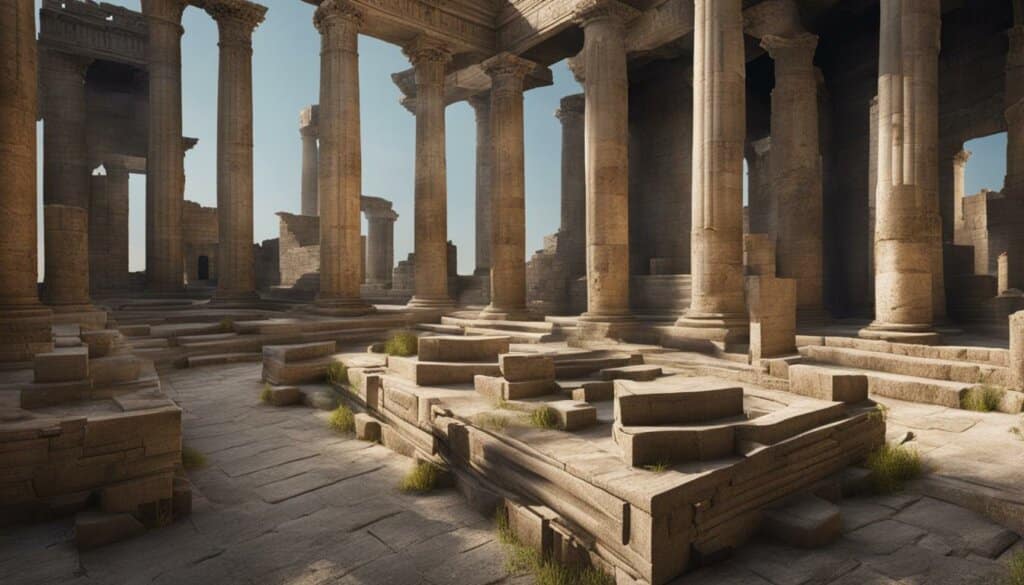
The Future of AR in the Art and Museum World
Augmented reality (AR) technology is pushing the boundaries of artistic expression and enhancing cultural experiences in museums and galleries. As technology continues to advance, the future of AR holds immense potential for the art and museum world. One exciting development on the horizon is the advent of AR glasses, which could revolutionize the way visitors interact with digital overlays and information within museum spaces. With AR glasses, users will have a seamless and immersive experience, removing the need for smartphones or other devices.
Imagine walking through a gallery and seeing digital artworks appear before your eyes, seamlessly blending with the physical exhibits. AR glasses can provide viewers with real-time information, stories, and interactive elements, adding a new layer of depth to the artistic experience. This technology opens up opportunities for artists to create captivating and interactive installations that merge the physical and digital realms.
AR in the art and museum world also offers the potential for enhanced storytelling. Artists and curators can leverage AR to create immersive narratives that transport visitors to different time periods or historical events. By combining visual elements, audio, and contextual information, AR can bring historical moments to life in a way that engages and educates audiences on a deeper level.
The Impact of AR on Artists and Creativity
“AR technology opens up new possibilities for storytelling and expression, allowing artists to engage with their audiences in unique and captivating ways.”
AR technology is not just a tool for preserving history; it also has a profound impact on artists and their creative process. Through AR tools, artists can explore new mediums and push the boundaries of traditional art forms. They can create interactive artworks that respond to viewers’ movements or allow users to dive into a virtual world within the physical space of a museum or gallery.
AR helps artists bridge the gap between the tangible and intangible, enabling them to experiment with different dimensions, perspectives, and sensory experiences. It allows for the integration of digital elements into physical artworks, blurring the lines between reality and imagination.
With the continued advancement of AR technology, we can expect even more exciting and innovative developments in the art and museum world. From immersive installations to interactive storytelling, AR has the potential to transform how we engage with art and culture, creating truly unforgettable experiences.
The Impact of AR on Artists and Creativity
Augmented reality (AR) technology is not only transforming the way we experience museums and cultural heritage, but it is also revolutionizing the world of art and creativity. Artists are now able to use AR tools to create immersive and interactive artworks that push the boundaries of traditional art forms. By blurring the lines between the physical and digital worlds, AR offers artists new mediums to explore and innovative ways to engage with their audiences.
AR technology provides artists with the ability to tell stories in unique and captivating ways. Through the use of interactive elements, animations, and 3D visuals, artists can create immersive experiences that go beyond traditional static artworks. This opens up a world of possibilities for artists to experiment with new techniques, materials, and concepts, resulting in artworks that are rich in depth and meaning.
One of the key benefits of AR for artists is the opportunity for dynamic storytelling. With AR, artists can create narratives that unfold as viewers interact with the artwork. This allows for a more engaging and participatory experience, where the audience becomes an active part of the storytelling process. AR also offers artists the chance to collaborate with other creatives, such as musicians, writers, and dancers, to create multidisciplinary experiences that combine various art forms.
AR technology has the potential to revolutionize the art world, giving artists new tools and mediums to explore and pushing the boundaries of creativity.
Examples of AR in Art
AR has already made its mark in the art world, with several notable examples of artists embracing this technology. One such example is the work of KAWS, a renowned street artist who has incorporated AR into his exhibitions. Using AR-enabled smartphones, visitors can interact with KAWS’ artworks, bringing them to life in captivating and unexpected ways.
Another example is the artist duo DPT. Their project, titled “As Above, So Below,” combines AR and mixed reality to create an immersive experience where viewers can explore a fictional world filled with fantastical creatures and landscapes. By seamlessly blending the physical and digital realms, DPT pushes the boundaries of what art can be.
| Artist | Artwork | Description |
|---|---|---|
| KAWS | Interactive AR-enabled artworks that come to life through smartphone interaction. | |
| DPT | 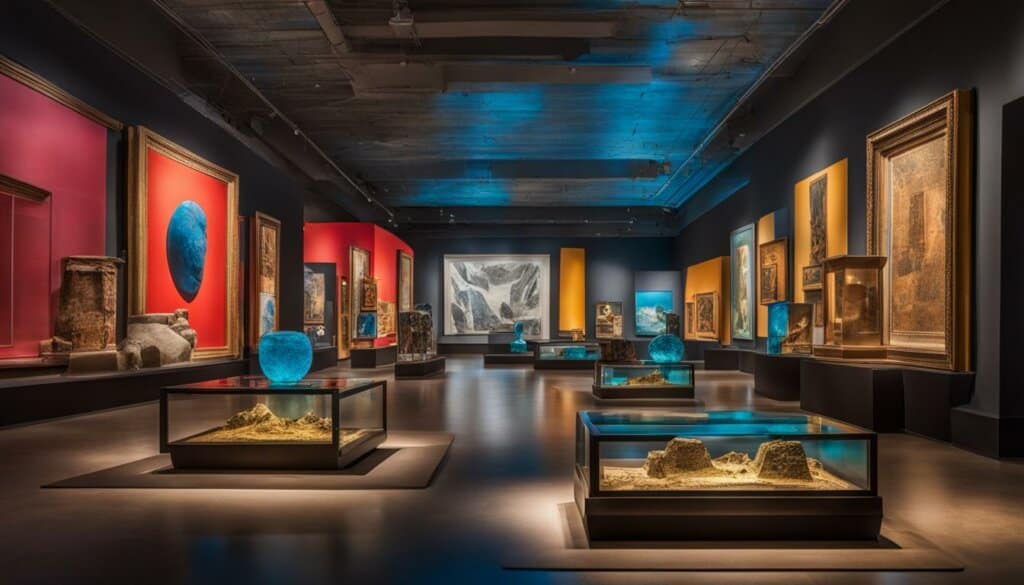 |
Immersive mixed reality experience featuring fictional creatures and landscapes. |
These examples illustrate just a fraction of the potential that AR holds for artists and the limitless possibilities for creativity and artistic expression. As technology continues to advance, we can expect to see even more groundbreaking artworks that redefine the boundaries of art and captivate audiences in new and exciting ways.
Conclusion
Augmented reality (AR) technology is revolutionising the way we experience museums and cultural heritage. By bringing lost history back to life and offering immersive and interactive experiences, AR fills gaps in our knowledge and preserves our shared cultural heritage. With the potential to bridge cultural divides and provide new opportunities for artistic expression, AR is proving to be an invaluable tool in the preservation and presentation of history.
Through AR, museums have the ability to transport visitors to different time periods and civilizations, allowing them to engage with historical artifacts and artworks in a whole new way. By providing 3D reconstructions and interactive experiences, AR technology enhances the visitor’s understanding and appreciation of our collective history. It opens doors to explore ancient civilizations, lost heritage, and untold stories that would not otherwise be accessible.
Furthermore, AR has the power to unite people by offering a shared cultural experience. Whether it’s the Elgin Marbles or other controversial artifacts, AR can create digital reconstructions that can be viewed virtually, allowing individuals from different continents to engage with these objects while respecting their physical location. This creates an opportunity for dialogue and understanding, bridging the gap between cultural differences and fostering a sense of global heritage.
As technology continues to advance, we can only anticipate more exciting developments in the world of AR and its impact on our understanding of the past. The possibilities are endless, from AR glasses that provide seamless augmented experiences to further blurring the lines between physical and digital art forms. AR is not just a passing trend; it is a transformative force that is shaping the future of museums, cultural heritage, and technology.
FAQ
How does augmented reality (AR) technology enhance museum and gallery experiences?
AR technology allows users to view 3D reconstructions of lost artwork and historic monuments through their smartphones, providing interactive and immersive experiences.
Which museums have implemented AR technology?
Renowned institutions such as the Louvre in Paris, the Rijksmuseum in Amsterdam, and the Design Museum in London have successfully implemented AR technology.
How can AR technology potentially resolve the Elgin Marbles debate?
By creating digital reconstructions of the marbles and displaying them in a virtual environment, AR can offer a shared cultural experience while preserving the original artifacts in their current location.
What role does AR technology play in the preservation of lost history?
AR technology digitally reconstructs ancient artifacts and monuments, allowing viewers to experience them in a way that would not otherwise be possible, filling gaps in our knowledge of the past.
What can we expect in the future of AR in the art and museum world?
As technology continues to advance, we can expect more immersive and interactive experiences, including the use of AR glasses that provide digital overlays and information directly in the viewer’s field of view.
How does AR technology impact artists and their creativity?
Artists can use AR tools to create immersive and interactive artworks, blurring the boundaries between the physical and digital worlds, opening up new storytelling possibilities and pushing the boundaries of creativity.

